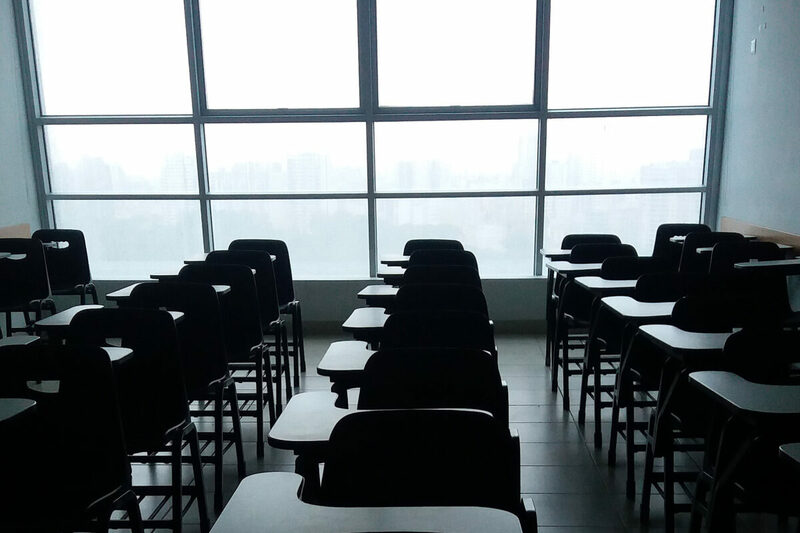New Learning MOOC’s Updates
Rise of online classrooms: Is it the change we need or a fad that would go away?
The COVID-19 pandemic has led a large number of institutions especially private institutions to switch to online classrooms to facilitate continued learning among the students. This has been a great gift to the teaches as well as students who would like to continue their classes even when there are a lot of restrictions and the social distancing norms put in place to reduce the number of people getting affected by the coronavirus. Across the world, we are seeing this trend rise as well. Even the universities have taken initiatives and are providing online classes to students including the international students who had to move back to their native country due to the global pandemic.
There are a lot of advantages to online classes. Few of them being it is convenient and ability to attend the classes even with any minor illness as the classes can be attended at the comfort of your house. It is also comparatively affordable as many private schools have provided a reduction to the fee. The accountability of the classes are improved and the recordings help the students to get back to the topic that is hard for them to rewatch for better understanding. Studies have also shown that students have increased retention of knowledge and fewer distractions from peers allowing them to learn better. These are great as the main aim to move to the online mode of classes is to allow learning and not stop it.
https://www.weforum.org/agenda/2020/04/coronavirus-education-global-covid19-online-digital-learning/
On the other hand, there seem to be a lot of problems and challenges faced by both the teachers as well as the students. There were no classes held for government/public schools in rural parts of India as there was no proper infrastructure for the internet. The teachers who were not very tech-savvy found it hard to conduct these classes as they were not used to working on the computers and use apps such as Zoom, Skype, google meet, etc. This was also faced by younger students who were not familiar with technology and the parents coming from economically weak backgrounds. This created a huge gap in learning among students of the same age group. These issues were found to the true in other developing and underdeveloped countries. Other issues faced by the class was the technical issues and bandwidth problems by the internet service provider. Another issue is the problems with practical subjects like maths and science which require students to perform practical demonstrations and also with making group projects.
https://elearningindustry.com/advantages-and-disadvantages-online-learning
Previously corresponding or distance education was not given any importance or valued while applying to jobs. There is also quality online education being provided online with many courses in coursera as well as other platforms. Certification courses also seem to be moving to online platform these days.
Though the online classroom format seems to have both advantages as well as disadvantages, one might argue that this is here to stay. The online classroom methodology has proven to have many benefits that can help in better delivery of the classes. So the future can be a hybrid classroom. A combination of both online and offline classes. The online classrooms can cover the theory part and provide asynchronous activities and assignments, whereas the offline classes can be used to provide demonstrations and encourage group activities like projects and sports. This can also help reduce the infrastructure required by the schools and also reduce the tuition fee charged by the schools making quality education more affordable.






@NischithaKr I believe that online courses are here to stay. They have definitely made education more accesible and would even dare to say that it has forces some students to become for responible and take ownership of their learning process. It has also fomented teachers to step out of their comfort zones and be updated in regards to the use of digital tools and resources.
As a teacher trainer I have witnessed how online courses has obligated teachers to come up with new student engagement strategies.
@Zhanar. Disadvantages of online training for the organizer
First, every speaker should learn how to use the e-learning platform. Secondly, it is necessary to master the techniques of effectively conducting seminars online. Third, you should definitely prepare each lesson, lecture or task from a technical point of view. In addition, it is important that each teacher uses methods of holding the attention of students. Otherwise, they can simply fall asleep at the computer.
Due to the fact that it is necessary to get acquainted with technical issues, you can lose experienced teachers. The choice of equipment and a suitable platform for conducting courses, you must agree, can scare off the older generation of teachers.
On the other hand, anyone who has a talent for teaching and a passion for learning can make a career. Creating your own e-course for distance learning takes less time than before. Different forms of material submission are chosen for the courses.
If you create small podcasts, it will not take much time. You can post links to them on your page or on YouTube.
Conducting webinars or seminars online. To which you can even invite several thousand people at the same time. Lectures and practical classes can be held on webinar platforms. Show students clearly the implementation of their actions. What works great is inviting students to speak at the class.
Creating a program for teaching each student separately.